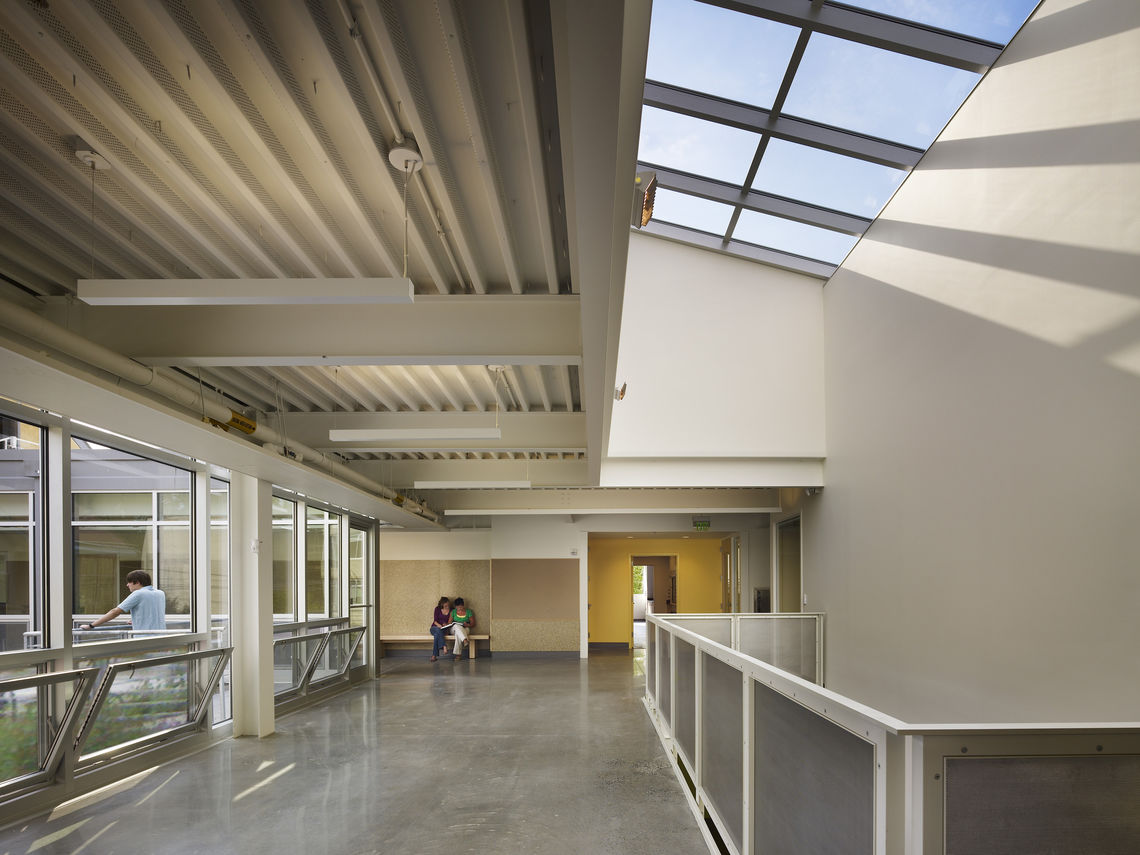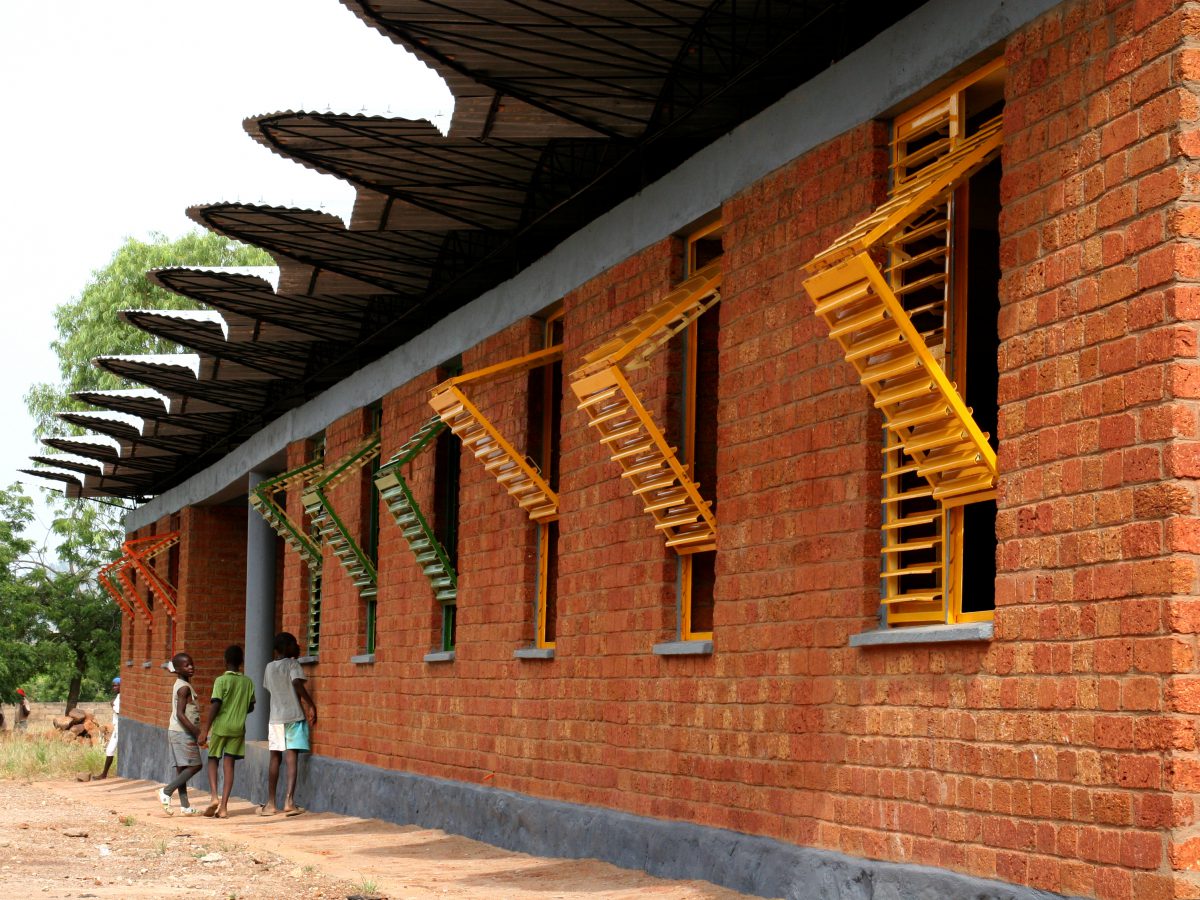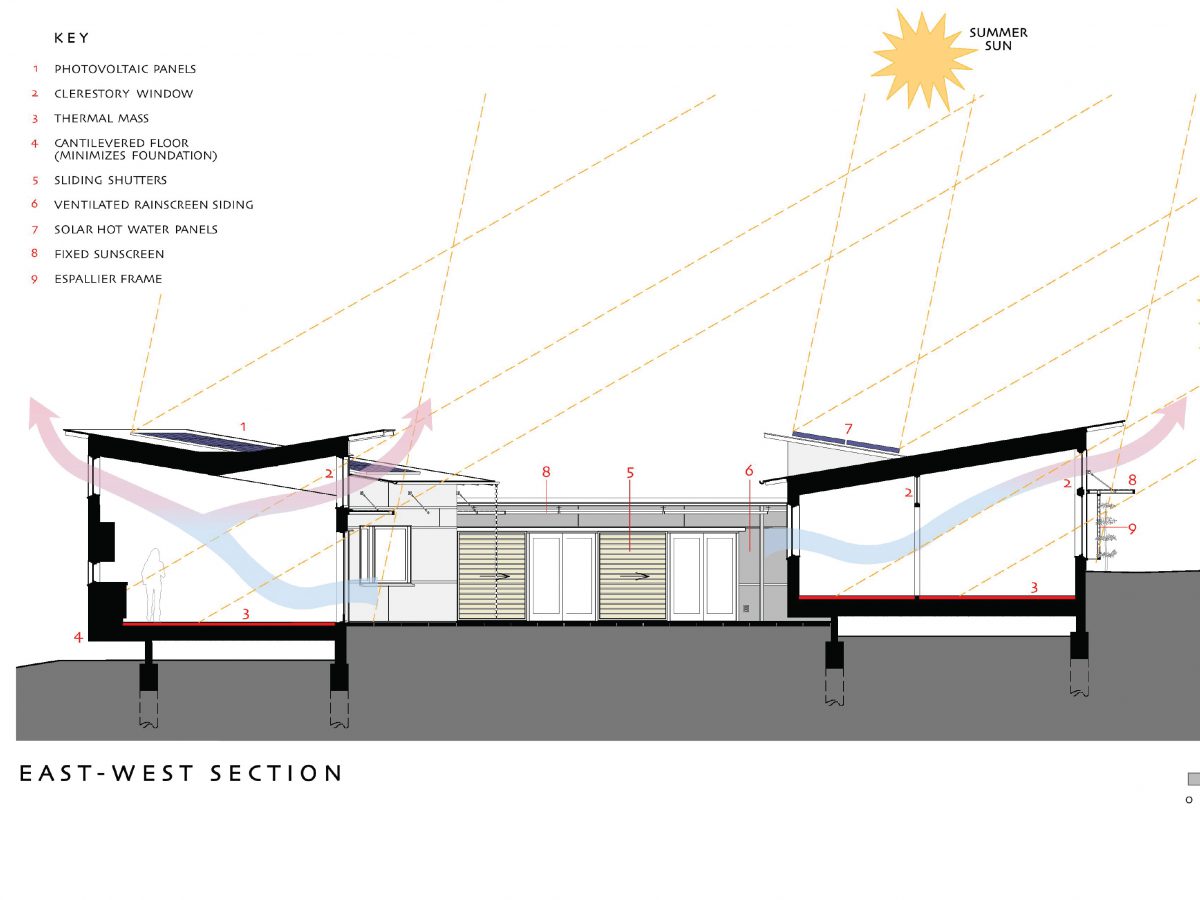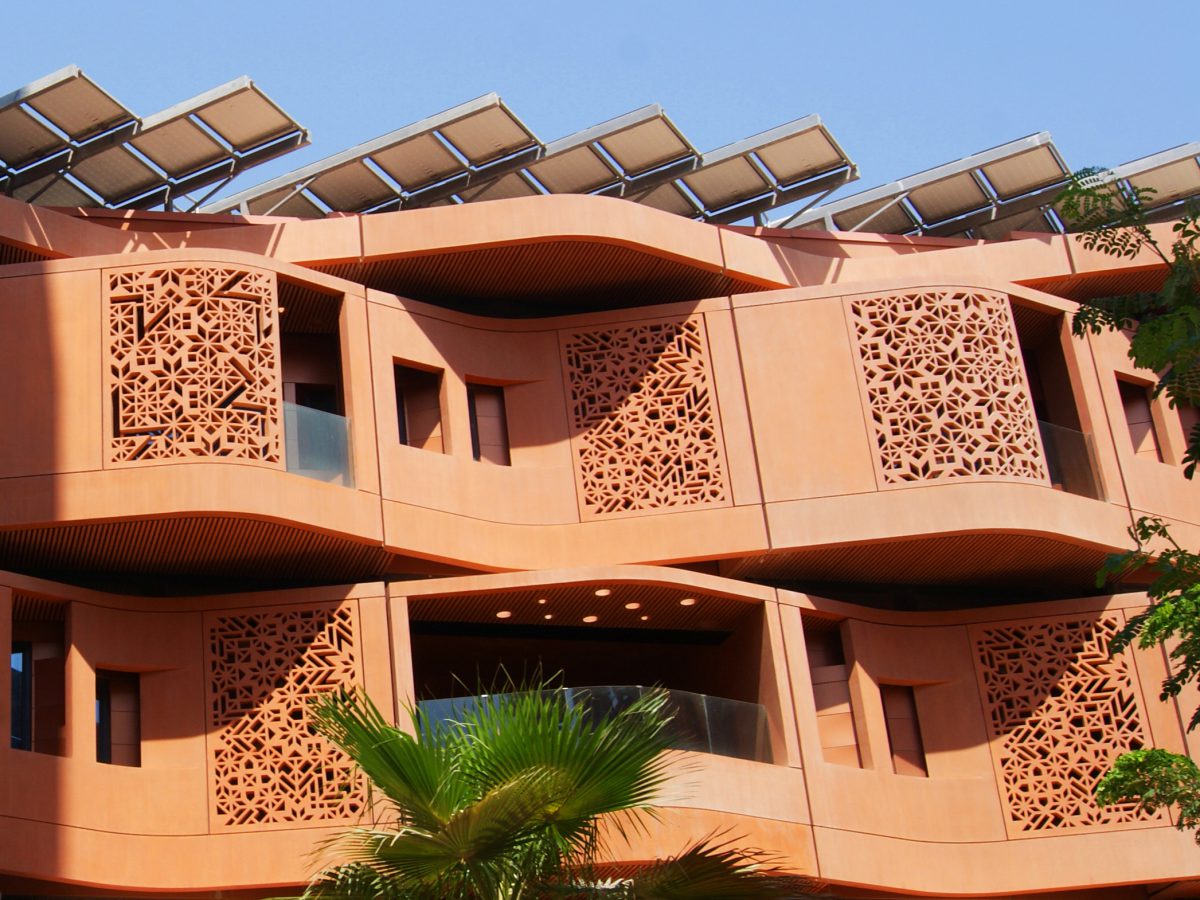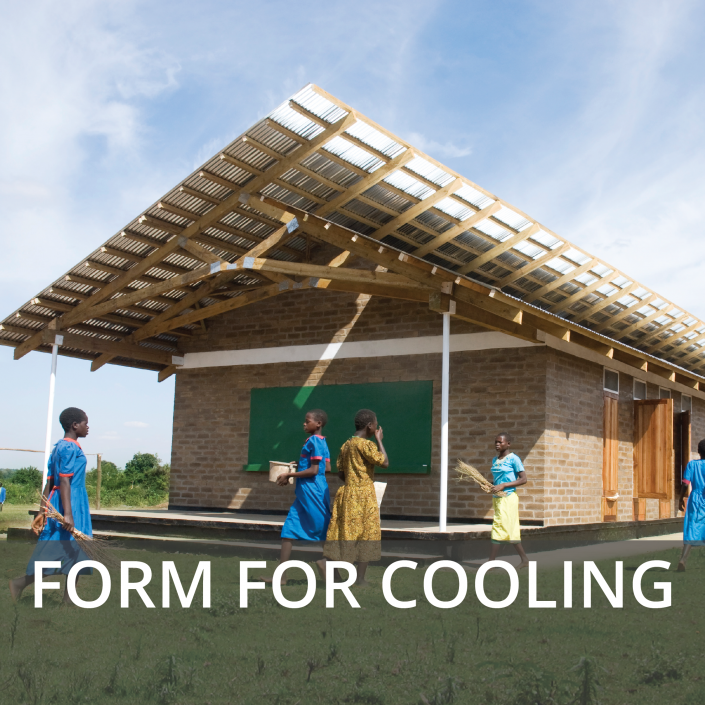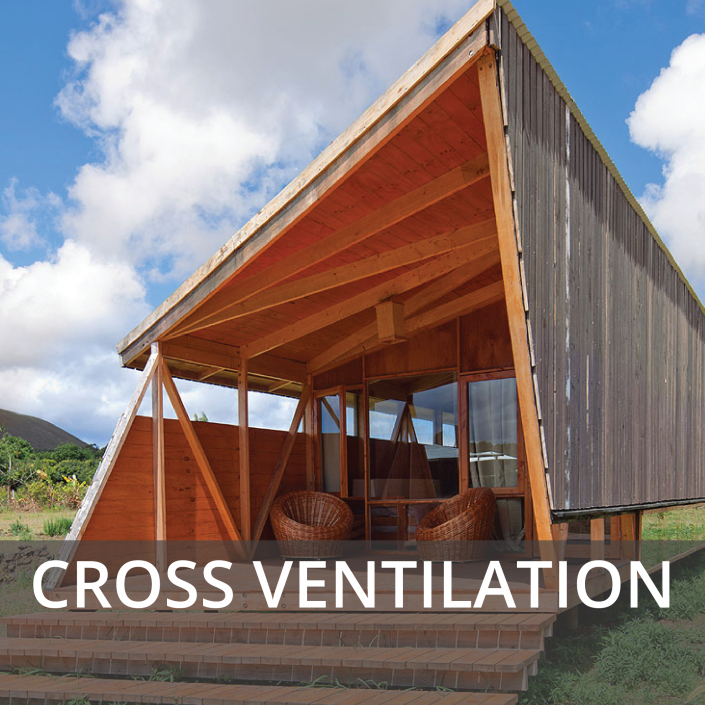Thermal mass (e.g., concrete, masonry, adobe, etc.) located in a space and cooled at night, absorbs heat and provides cool indoor surfaces and temperatures the following day.
In dry climates with a diurnal temperature difference of 11°C (20°F) or more, and where summer nighttime temperatures fall at least 5.5°C (11°F) below the desired indoor daytime temperature, use cool night air to flush heat from a space and cool interior thermal mass. A space will then remain cool during the daytime without the use of off-site energy sources.
Incorporate thermal mass in the walls, floor and/or ceiling:
- A minimum of 10.2 cm (4 inches) in thickness, with
- An exposed surface area of 1 to 3 times the floor area.
The more surface area of mass in a space, the more stable the indoor temperature. Use cross or stack ventilation to cool the mass at night.

